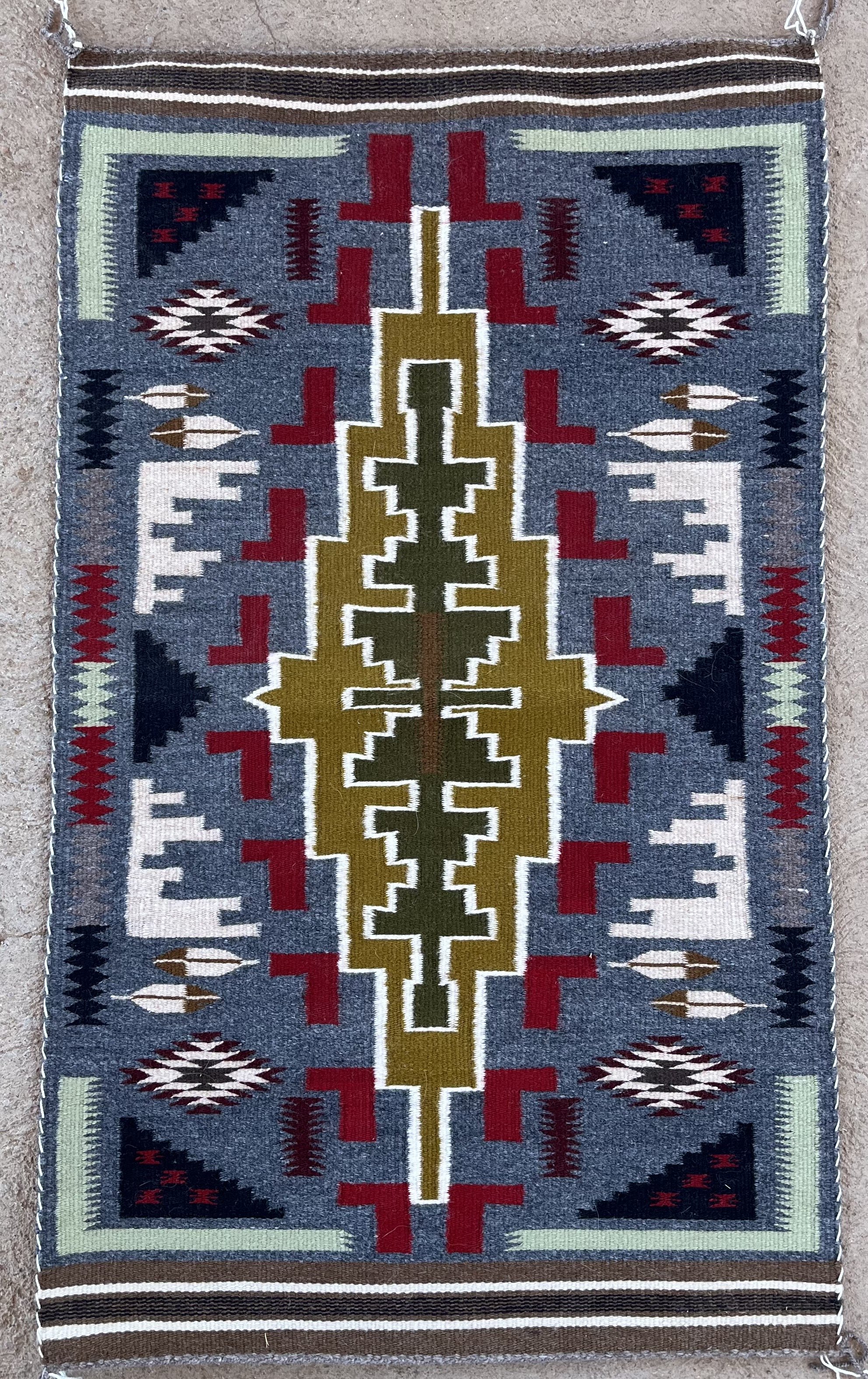
Navajo Weaving
Navajo Weaving
A disappearing part of western Americana
Light Plays across distant mesas, the spires of Monument Valley rise one hundred miles to the west, and only an occasional pinon or juniper tree breaks 180 degrees of sky. Alice Roy lives and weaves in this remote area of Teec Nos Pos on the Navajo reservation, near the area known as the Four Corners.
Traditionally Navajo weavers shear the sheep in the spring, then wash the wool with yucca root which produces a sudsy soap, leaving the wool soft and clean when dried in the high desert sun. They then separate the wool, the light from the dark, before carding it and spinning it into a soft and even yarn. The darker wool, which comes from the brown and black sheep, is then put into a large bucket of water and placed over an open fire. Pinon pitch, which is gathered from the pinon trees is then added and when the yarn is fished out with a stick a couple of hours later, the yarn has become a deep rich black. Various shades of gray are made by carding white wool together with black wool. Colors are made by boiling the white yarn either with native plants or package dyes from the store. Packaged dyes were in the Southwest and became part of Navajo weaving as early as 1870.
Today many Navajo weavers use a processed wool which is often Navajo wool sent off the reservation to be commercially washed and cleaned, then spun and dyed into various colors and shipped back to the reservation to be sold. Obviously weaving a rug with wool done in the traditional way, which we call handspun, will cost more.





